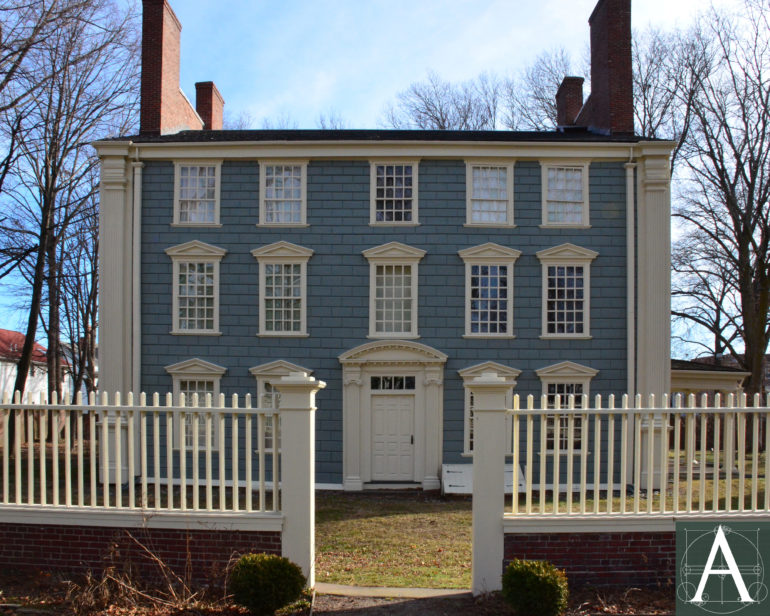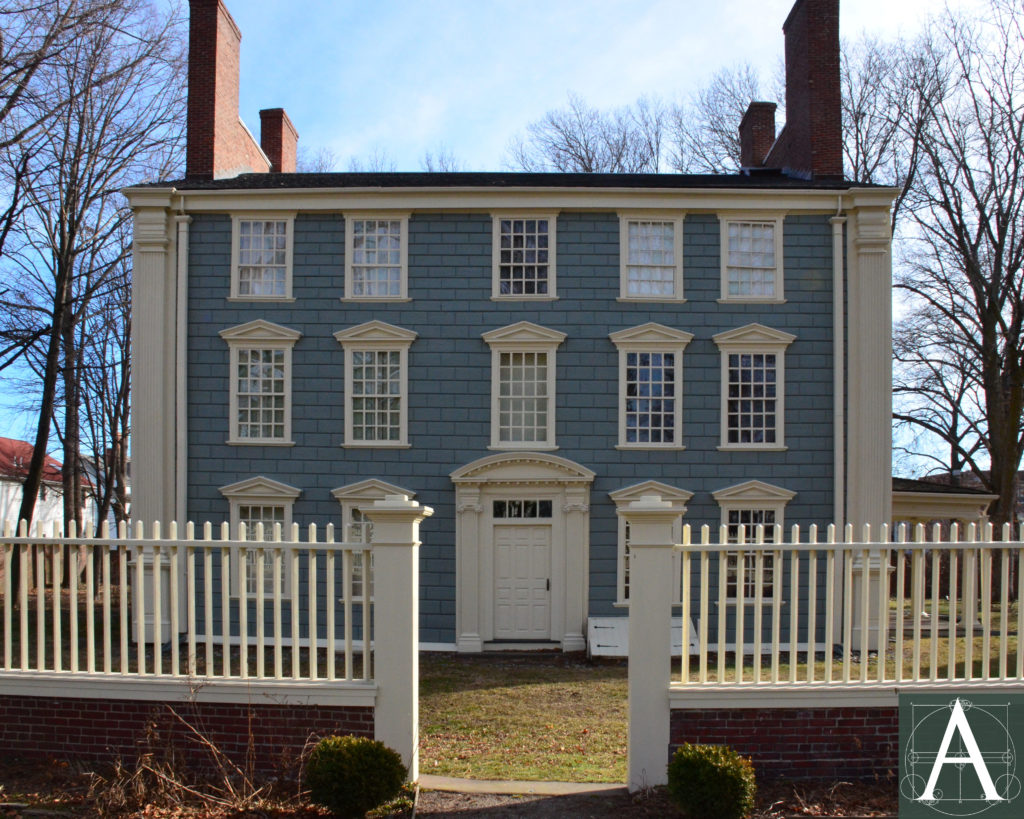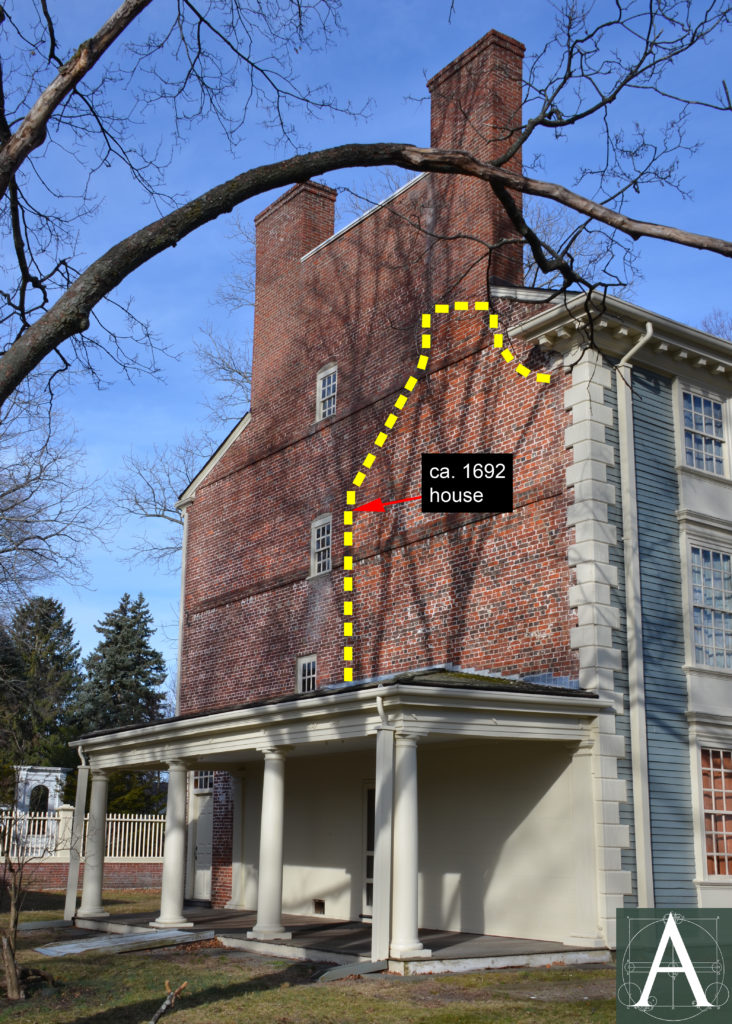The Usher-Royall House served as a country seat and center of a large agricultural property from 1631 when Governor John Winthrop received nearly one square mile of land straddling the modern town boundaries of Somerville and Medford, Massachusetts. In 1677, Winthrop’s heir sold the property to Elizabeth Lidgett, widow of Peter Lidgett, whose son, Charles, was associated with the highly unpopular administration of the Royal Governor, Edmund Andros, in the late 1680s. In the 1690s, the property came into the possession of Charles Lidgett’s brother-in-law, John Usher, who also served in the administration of Edmund Andros and later as Lieutenant Governor of the Province of New Hampshire. Various traditions suggest that Usher remodeled an existing brick house on the property; others indicate that he built the eastern half of the present house in 1692.
Following the Lidgett-Usher family ownership of the property, it was sold with 500 acres in 1731 or 1732 to Colonel Isaac Royall, a wealthy planter from Antigua, who remodeled the existing house and is believed to have constructed separate slave quarters for the 27 slaves he brought with him from Antigua. Royall is believed to have raised the eave height of the original house and re-faced its façade (east elevation) with wood elaborately decorated in the Georgian style. Following the senior Royall’s death in 1739, Isaac Royall Jr, inherited the property and carried out a major expansion, doubling the depth of the house by the addition of a western range of rooms and wooden garden façade with elaborate Georgian-style ornaments.
Due to Royall’s Tory associations, he was banished from the colony in 1778 and fled to Nova Scotia.
The property was seized during the Revolution, but in the late eighteenth or early nineteenth century, it was recovered by Royall’s heirs who sold the property in several pieces, of which the house and a large tract of land were acquired by Jacob Tidd, a distiller, whose family occupied the property through the mid-nineteenth century. In the latter half of the nineteenth century the majority of the property was subdivided into suburban house lots, leaving only the main house, slave quarters and a small area of garden/park to recall its earlier setting.
By the 1890s, the house was unoccupied and in deteriorated condition. The Daughters of the American Revolution took an interest in furnishing and opening the building to the public under a lease. In 1908, the Isaac Royall House Association acquired the property.



